The Gift of South Dakota
Subscriptions to South Dakota Magazine make great gifts!
Subscribe today — 1 year (6 issues) is just $29!
What the Bones Say
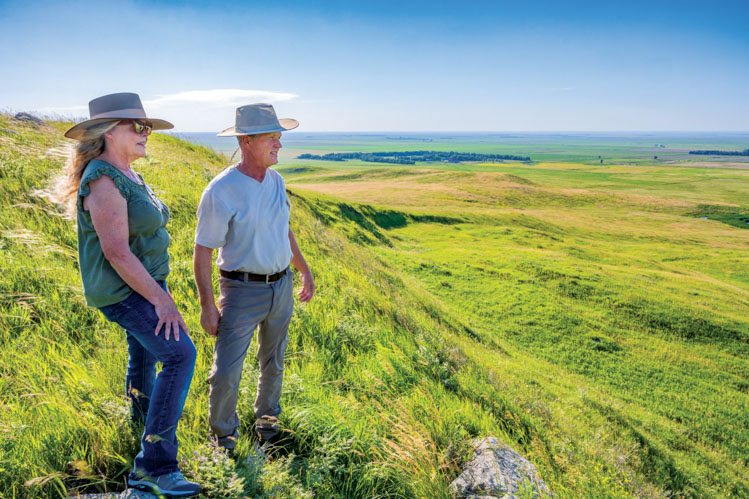 |
| Centuries-old bison kill sites on Candice and Dean Lockner's ranch near Ree Heights may help us learn more about the Indigenous people who lived and hunted here. |
The bison are just where the scouts have said they would be, grazing the warm-season grasses near a natural spring at the west edge of the broken country.
This hunt has been planned for weeks. Once everyone is in place, people wave branches and robes, moving toward the animals, hazing them toward the bluff. The slope is steep enough that one or two animals injure themselves, but others scramble safely into a deep ravine with no outlet. The lower opening of the canyon is blocked with fallen timber.
The animals are confused. They plunge against each other wildly, with no place to go. Hunters move into place at the edge of the ravine above them.
Archaeologists believe a scene like this occurred almost 1,000 years ago in Dean and Candice Lockner’s pasture near Ree Heights in central South Dakota. Dean found a layer of bones covered by about a foot of native sod in 2011 while checking cattle. The Lockners suspected they had found a bison kill site, with good reason. Archaeologists carried out a dig in 1960 at a bison kill site along the ridge 2 1/2 miles east of the Lockners’ discovery, and there is a later find of bison bones and artifacts, though never professionally excavated, just a few hundred yards east.
The Ree Hills — a mesa that gives the town of Ree Heights its name — rises 391 feet and covers about 180 square miles in Hand County. “It’s kind of like an island in the prairie, raised up above everything,” says Augustana University archaeologist Aaron Mayer. “And it’s a vantage point. You could see the bison herds from dozens of miles away. They were definitely using that area for different kill events.”
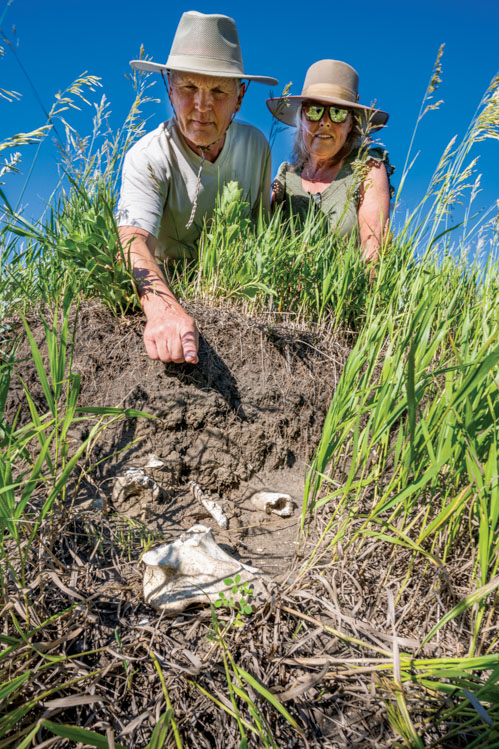 |
| Dean Lockner found bison bones, estimated to be nearly 1,000 years old, protruding from a ridge of soil in 2011. Each season of erosion and excavation reveals more at the site. |
At that first Ree Heights excavation in 1960, archaeologists William Hurt and Robert Gant found a “kitchen” area for processing meat and stone piles on the bluff. Very likely it was a bison jump in the classic sense, where Native hunters drove the animals off a cliff or rim steep enough to kill or injure many of the animals.
When archaeologist Mike Fosha, then of the South Dakota State Historical Society’s Archaeological Research Center, visited the Lockners’ site at their request, he suggested the hunters probably used a different method there: an arroyo trap.
That’s possible because Ree Hills geology consists of shale capped by Ogallala sandstone and covered by glacial material. Because shale near the edges of the landform has slumped over time, there are irregular benches along the steep edge of the ridge where animals could be trapped — either by driving them down from the bluff above or up the slope.
At his initial visit in 2015, Fosha removed a mandible of a young bison for lab work. Zooarchaeologist Danny Walker, a specialist in Wyoming, estimated the age of the young animal at 1.1 years. That indicates that the hunters probably killed it in the month of June or July. Radiocarbon testing on a molar from the animal dated the collagen in the tooth to a time between A.D. 1180 and A.D. 1270.
After exploratory work in 2017 and another excavation in 2022, archaeologists have now found four stone projectile points — either from arrows or perhaps from shafts hurled with an atlatl — as well as a scraper that may have been used for processing hides. They have also found chips of stone that may indicate hunters were sharpening tools on site.
The age of the new site makes it too early to associate it with any of the Native American tribes known to history. “We cannot make any direct connections from Ree Heights to Mandan, Hidatsa, or Arikara, but it does not mean that those people could not have been their ancestors,” Mayer says. “It may be likely the Arikara and Mandan hunted there at some points in time.”
Gardner Deegan of the MHA Interpretive Center in New Town, North Dakota, — an organization that showcases the cultures of the Mandan, Hidatsa and Arikara peoples, or the Three Affiliated Tribes, on the nearby Fort Berthold Reservation — believes the tribes lived in other regions during their history. And elders say the tribes definitely knew how to use landforms in hunting. “I do know that in the culture, they used to do buffalo jumps,” Deegan says. “They would lead the buffalo off a cliff and the buffalo would fall.”
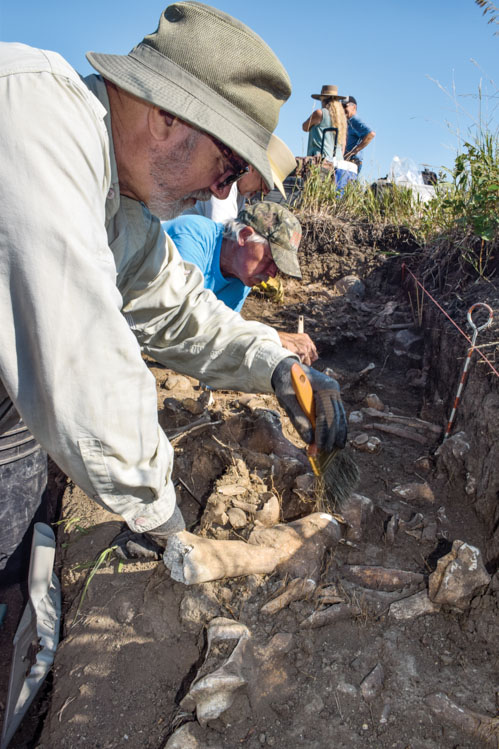 |
| Doyle Crume and Del Compaan, volunteers from Webster, help excavate a bed of bison bones near Ree Heights in 2022. |
Candice Lockner said she’s heard other Native Americans talk about their traditional technique for leading bison into a trap, perhaps by having someone pretend to be a bison calf while others push the herd from behind. It’s the same “pushing and pulling” principle that some ranchers instinctively use to move grazing animals today. Lockner says the technique could have worked well in central South Dakota. “Located above the three Ree Hills kill sites are very large boulders, behind which the fake ‘calf’ could hide,” she says.
Whatever the method, there are clues that people living in earth lodges on the James River near present-day Mitchell, about 100 miles east, may have been involved. An arrowhead found at the Lockners’ site is similar to an arrowhead found at the James River villages, which were active between about A.D. 1050 and A.D. 1200.
Interestingly, archaeologists have unearthed a large clay-lined basin at the Mitchell site that they believe was used as a bone grease processing station. Bone grease was obtained by applying heat to crushed bone. The grease may have been used not only in feeding the village, but also as an ingredient in a dried meat product such as pemmican.
Now, with the newly discovered bison kill site at Ree Heights from the same time period, archaeologists are considering the possibility that hunters from the river villages were traveling to the Ree Hills to harvest bison. It’s known from historical records that the area remained a reliable source of bison well into the fur trade era.
Ranchers are confident there are other bison kill sites yet to be discovered in the area. In August 2022, when archaeologists were working on the Lockners’ ranch, Dean and Candice walked along that tumble of hills in their rangeland and found yet another bone bed exposed by weather. Mayer, the Augustana University archaeologist, said Dr. Kristen Carlson, a faunal and bison bone expert, was on location and confirmed the site contains bison bones. Archaeologist Alexander Anton, now in Rapid City at the Archaeological Research Center, found a stone flake that indicates hunters with stone tools were on site at that new location, as well. It’s far enough from the first site on the Lockners’ ranch to be considered a new, separate kill site. That makes four confirmed bison kill sites in the Ree Hills.
As of 2018, there are more than 30 possible bison kill sites recorded in the database of the South Dakota State Historical Society’s Archaeological Research Center, but Fosha notes that many of those have not been confirmed.
In September 2023, the Lockners learned that the bison kill site on their ranch has been approved for listing on the National Register of Historic Places. Though the site won’t be open to the public, the couple says the recognition is an important step toward preserving what is hidden on their ranch and learning more about how early Native Americans hunted bison in the Ree Hills centuries ago.
“You may temporarily own land,” Candice Lockner says, “but you do not own the history.”
Editor’s Note: This story is revised from the September/October 2024 issue of South Dakota Magazine. To order a copy or to subscribe, call (800) 456-5117.



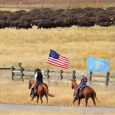


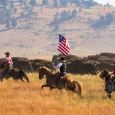

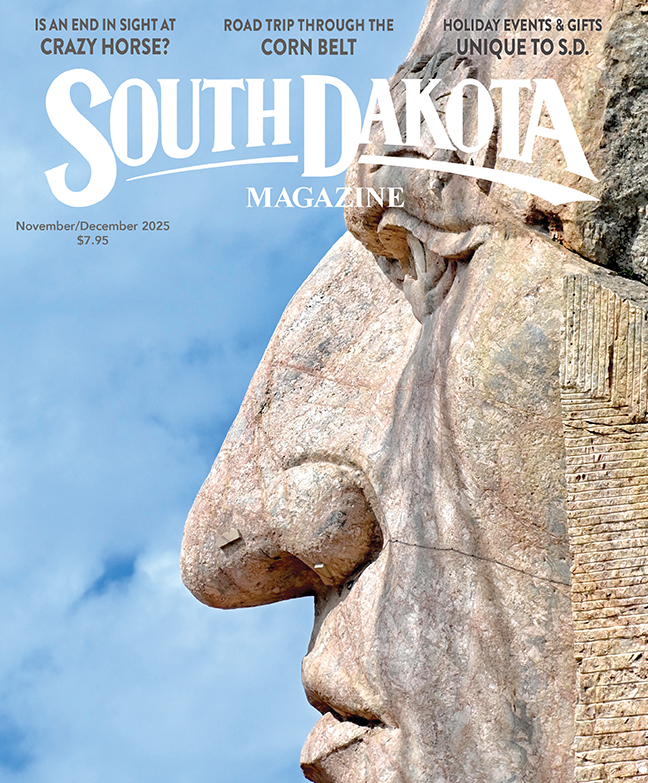

Comments